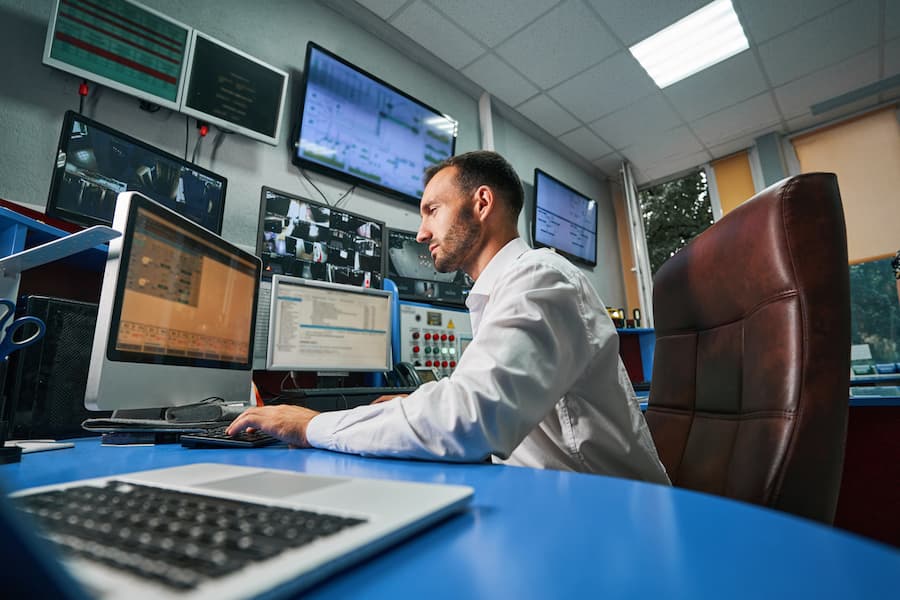What is Computer Numerical Control (CNC)?
Precision and automation are essential for efficiency and consistency. One of the most revolutionary technologies that transformed industrial production is Computer Numerical Control (CNC). CNC technology automates machine tools by using pre-programmed software to control cutting, drilling, and shaping materials with extreme accuracy.
From aerospace and automotive industries to woodworking and medical device manufacturing, CNC has become a cornerstone of modern production. But what exactly is CNC, how does it work, and why is it so important? In this blog post, we will explore the fundamentals of CNC, its history, applications, advantages, challenges, and future trends.
The History of CNC Technology
CNC technology has come a long way from its early days. Understanding its evolution helps us appreciate its impact on modern manufacturing.
1. Early Numerical Control (NC) Machines (1940s-1950s)
Before computers took over, machine tools relied on Numerical Control (NC), a system that used punched tape to guide machine movements. These machines automated repetitive manufacturing processes but were limited by their mechanical controls.
2. Introduction of CNC Machines (1960s-1970s)
With the advancement of computer technology, manufacturers began integrating computers into NC systems, giving birth to CNC machines. These new systems allowed for easier programming, flexibility, and more complex machining capabilities.
3. Growth and Expansion of CNC (1980s-1990s)
During this period, CNC machines became more accessible and widely used. Innovations in software, multi-axis machining, and automation made CNC technology indispensable in industries requiring high precision and efficiency.
4. Modern CNC Systems (2000s-Present)
Today, CNC machines are equipped with Artificial Intelligence (AI), cloud-based controls, and Internet of Things (IoT) connectivity, making them smarter and more efficient than ever before.
How Computer Numerical Control (CNC) Works
At its core, CNC technology automates the operation of machines by following a set of coded instructions. Here’s how it works:
1. Designing the Part
A part is first designed using Computer-Aided Design (CAD) software. This digital blueprint is then converted into a machine-readable format.
2. Programming the CNC Machine
The CAD model is translated into a program written in G-code, which tells the CNC machine how to move, cut, or drill the material. This programming step ensures precise execution.
3. Machine Setup
Operators load the program into the CNC Machine Control Unit (MCU), set up the necessary tools, and secure the raw material in place.
4. Execution and Monitoring
Once the machine is ready, it executes the program, moving the tools along the programmed paths to shape the material. Sensors monitor the process to ensure accuracy and efficiency.
5. Finishing and Inspection
After machining, parts go through quality control, surface finishing, and any necessary adjustments before final use.
Types of CNC Machines
CNC technology is applied in various types of machinery, including:
1. CNC Mills
CNC milling machines cut and shape materials using rotary tools, making them essential for industries requiring precision metal and plastic components.
2. CNC Lathes
Lathes are used to create cylindrical objects by spinning the material against cutting tools. CNC lathes automate this process for higher efficiency.
3. CNC Routers
Primarily used in woodworking, CNC routers cut, engrave, and carve intricate designs into wood, plastics, and soft metals.
4. CNC Plasma Cutters
These machines use a high-temperature plasma torch to cut through electrically conductive materials like steel and aluminum.
5. CNC Laser Cutters
Using high-powered laser beams, CNC laser cutters precisely cut and engrave materials with minimal waste.
6. CNC Grinders
These machines use rotating grinding wheels to create smooth surfaces and refine metal components.
Applications of CNC Technology
CNC machines are used across multiple industries due to their ability to produce complex parts with high precision.
- Aerospace – Manufacturing aircraft components that require tight tolerances.
- Automotive – Producing car engine parts, transmissions, and chassis components.
- Medical Industry – Creating surgical tools, prosthetics, and custom implants.
- Electronics – Fabricating intricate circuit boards and enclosures.
- Woodworking – Engraving and carving custom furniture and cabinetry.
- Metal Fabrication – Cutting, bending, and assembling metal structures.
Advantages of CNC Technology
CNC machines provide numerous benefits, including:
1. Unmatched Precision
CNC machines can achieve accuracy within micrometers, making them indispensable in industries requiring extreme precision.
2. Consistency and Repeatability
Once programmed, CNC machines can produce identical parts repeatedly with zero variation.
3. Increased Efficiency and Speed
Automation reduces human labor, accelerates production, and minimizes errors, leading to faster turnaround times.
4. Reduced Material Waste
Precision cutting ensures minimal waste, leading to cost savings in raw materials.
5. Improved Worker Safety
Since CNC machines operate automatically, human workers are exposed to fewer risks in hazardous environments.
Challenges and Considerations
Despite its benefits, CNC technology comes with some challenges:
1. High Initial Investment
CNC machines and software require a significant upfront cost, making them expensive for small businesses.
2. Complex Maintenance Requirements
Advanced machines require skilled technicians for regular maintenance and troubleshooting.
3. Skill Gap in Programming
Operators must learn CNC programming and G-code to maximize machine potential.
4. Technology Dependence
Reliance on automation can lead to a decline in traditional machining skills.
Future Trends in CNC Technology
The future of CNC machining is evolving rapidly with advancements in:
1. Integration with IoT
Smart CNC machines will connect to the Internet of Things (IoT) for real-time monitoring and predictive maintenance.
2. Artificial Intelligence (AI) in Manufacturing
AI-driven CNC systems will optimize tool paths, predict failures, and enhance efficiency.
3. Hybrid Manufacturing
Combining CNC machining with 3D printing will allow for more versatile production methods.
4. Sustainability in CNC Machining
Energy-efficient machines and eco-friendly materials will drive future manufacturing processes.
5. Cloud-Based CNC Control
Remote operation and monitoring of CNC machines via cloud platforms will enhance flexibility and automation.
Conclusion
Computer Numerical Control (CNC) technology has transformed the way industries manufacture products, offering precision, efficiency, and automation. From its origins in numerical control to modern AI-powered machining, CNC continues to push the boundaries of what’s possible in manufacturing.
As technology advances, CNC machines will become even smarter, integrating IoT, AI, and sustainable practices to further optimize production. Whether you’re a manufacturer, engineer, or tech enthusiast, understanding CNC is crucial in the ever-evolving world of industrial automation.













